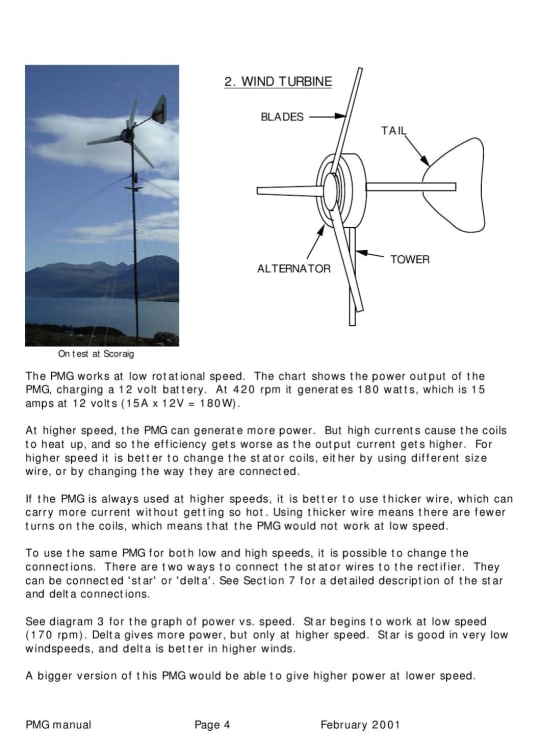Wind Turbine Construction Manual
At a glance..
This manual describes how to build a 'permanent magnet generator' (PMG). We can also call it an 'alternator', because it generates alternating current (AC). It will not generate 'mains voltage' or 'utility power' AC. It generates low voltage, 'three phase' AC, and then changes it into 'direct current' (DC) for charging a 12 volt battery.
The details..
The PMG Construction Manual written by Hugh Piggott provides step-by-step instructions on building a 'permanent magnet generator' (PMG) or alternator that generates low voltage, three-phase AC and converts it into direct current (DC) for charging 12-volt batteries. The book includes an exploded diagram of the PMG with detailed descriptions of its components such as steel spine and shaft, stator containing coils of wire, two-magnet rotors, rectifier mounted on aluminum heatsink among others.
This manual comprises eight sections starting from materials and tools required to make jigs and molds needed in constructing the stator followed by winding coils of enamelled copper wire cast in resin using these jigs. Section five describes how to build the magnet rotors using magnetic blocks and steel disks set in another resin casting while section six explains assembly procedures including balancing rotors before connecting wiring from the stator.
Section seven contains testing procedures ensuring correct balance ready-to-use status along with options for connecting electrical output. It also explains how to connect PMGs to batteries. Finally, section eight covers additional information about polyester resins use along with hydro power application possibilities.
Overall this book is an excellent resource for those interested in creating their own small wind generators through easy-to-follow steps outlined throughout each chapter. However, readers should exercise caution when assembling magnets so they cannot come loose under extreme circumstances.
